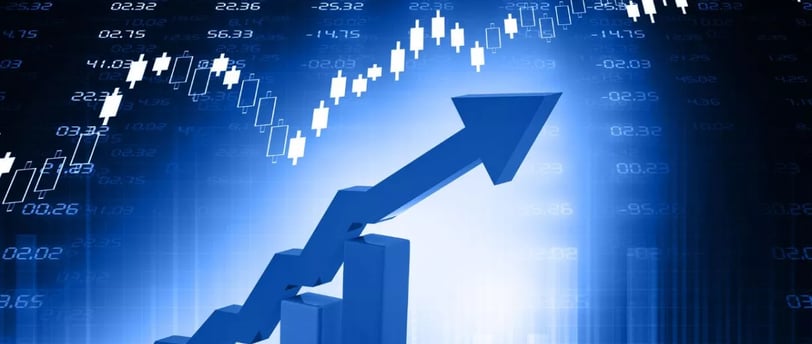Add your promotional text...
European Markets Juggle Mixed Signals Amid Economic Data, Retail Earnings, and Oil Price Volatility
Synopsis: European stock markets traded in varied directions as investors digested mixed economic data, corporate earnings from major retailers, and shifts in oil prices. From Germany's industrial production surge to cautious retailer forecasts and stabilized crude prices, the market showcased the interplay of global factors shaping regional trends.
MARKETSGLOBAL
By ASlankrita Shukla
1/9/20253 min read


European Markets See Divergent Trends Amid Economic Crosscurrents
On Thursday, European stock markets exhibited mixed performance as investors balanced positive developments in German industrial production, soft retail sales figures across the eurozone, and earnings updates from retail giants. At 06:35 ET (11:35 GMT), Germany's DAX index dipped 0.1%, while France's CAC 40 rose 0.4%, and the UK's FTSE 100 also climbed 0.4%.
Limited trading ranges prevailed, partially attributed to the closure of US markets in honor of former President Jimmy Carter's state funeral. The relatively subdued market activity masked the underlying complexity of ongoing economic and corporate dynamics.
German Industrial Production Beats Expectations Amid Mixed Signals
A standout highlight from Germany was the robust growth in industrial production, which rose 1.5% in November compared to the previous month, far exceeding the expected 0.5% increase. This surprising uptick provided a welcome boost to sentiment after disappointing data earlier in the month.
In contrast, German industrial orders fell 5.4% in November, raising concerns about demand sustainability, while retail sales dropped 0.6% during the same period. Across the eurozone, retail sales climbed just 0.1% month-on-month in November, missing the anticipated 0.4% rise. Annual growth slowed to 1.2%, marking the second consecutive month of deceleration.
These figures underscore the delicate balance the eurozone economy has maintained, narrowly avoiding recession over the past year.
ECB’s Outlook on Rates and Inflation
Eurozone inflation edged up to 2.4% in December from 2.2% in November, exceeding the European Central Bank's (ECB) 2% target. Policymaker Francois Villeroy hinted that interest rates could soon reach a "neutral" level—estimated at 2%—by the summer of 2025 if inflationary pressures subside.
The ECB is widely expected to continue cutting interest rates in the coming year, aiming to stimulate growth while keeping inflation in check. However, the rising inflation figures and subdued retail data present a challenging landscape for policymakers.
Retail Sector: Strong Sales, Muted Investor Sentiment
Corporate updates from some of Europe's major retailers drew significant attention. Despite strong holiday season sales, investor reactions were lukewarm due to cautious forward guidance.
Tesco:
UK’s retail giant reported festive period sales growth of 4.1% (like-for-like), but its stock fell over 1%.
The retailer maintained its full-year operating profit forecast, disappointing those hoping for an upgrade following strong half-year results.
Marks & Spencer (M&S):
Delivered a 6.4% rise in like-for-like sales during the 13 weeks to December 28.
However, its stock plunged 7% after the company flagged economic challenges ahead.
Greggs:
The low-cost food retailer reported slowing growth in like-for-like sales.
Its cautious outlook led to a 10% drop in share value.
B&M European:
The retailer’s stock tumbled 12% after lowering the top end of its annual profit forecast.
UK sales declined in its third fiscal quarter, amplifying investor concerns.
Oil Prices Stabilize After Inventory Build
The energy market saw oil prices steady after midweek declines spurred by unexpectedly large US fuel stockpile increases.
US Crude Futures (WTI): Rose 0.3% to $73.52 per barrel.
Brent Crude: Climbed 0.3% to $76.42 per barrel.
Despite these small gains, both contracts fell over 1% on Wednesday. Factors contributing to the drop included a stronger dollar and a significant build in US gasoline inventories, which surged by 6.3 million barrels last week—well above the anticipated 1.5 million-barrel increase.
Copper Prices Rise on Stimulus Hopes
Copper markets showed resilience, with benchmark futures on the London Metal Exchange rising 0.7% to $9,093.0 per ton. March copper futures gained 1.2%, reaching $4.3115 per pound.
These gains were fueled by weak inflation data from China, which sparked hopes for additional stimulus measures. Consumer prices in China remained flat in December, while producer prices fell for the 27th consecutive month. Beijing's aggressive stimulus efforts through late 2024 have yet to deliver significant inflationary traction, prompting speculation about further fiscal intervention to support growth.
Key Takeaways and Market Outlook
The mixed performance of European stocks reflects a confluence of factors shaping market sentiment:
Strong industrial production data from Germany contrasted with weak retail sales figures across the eurozone.
Retailers reported robust holiday sales, yet cautious guidance dampened investor enthusiasm.
Oil prices remain volatile, with inventory builds and dollar strength countering broader market dynamics.
Hopes for Chinese stimulus lifted copper prices, offering a glimpse of optimism in industrial commodities.
Looking ahead, the European markets are poised to navigate a landscape defined by persistent inflation concerns, evolving monetary policy, and cautious corporate outlooks. Investors will closely monitor ECB decisions, economic data, and geopolitical developments to gauge the trajectory of growth and investment opportunities.
In conclusion, Thursday’s market activity underscores the intricate interplay of economic data, corporate performance, and global market dynamics. As Europe balances resilience with challenges, the path forward requires investors to remain agile, informed, and ready to seize opportunities amidst uncertainty.
